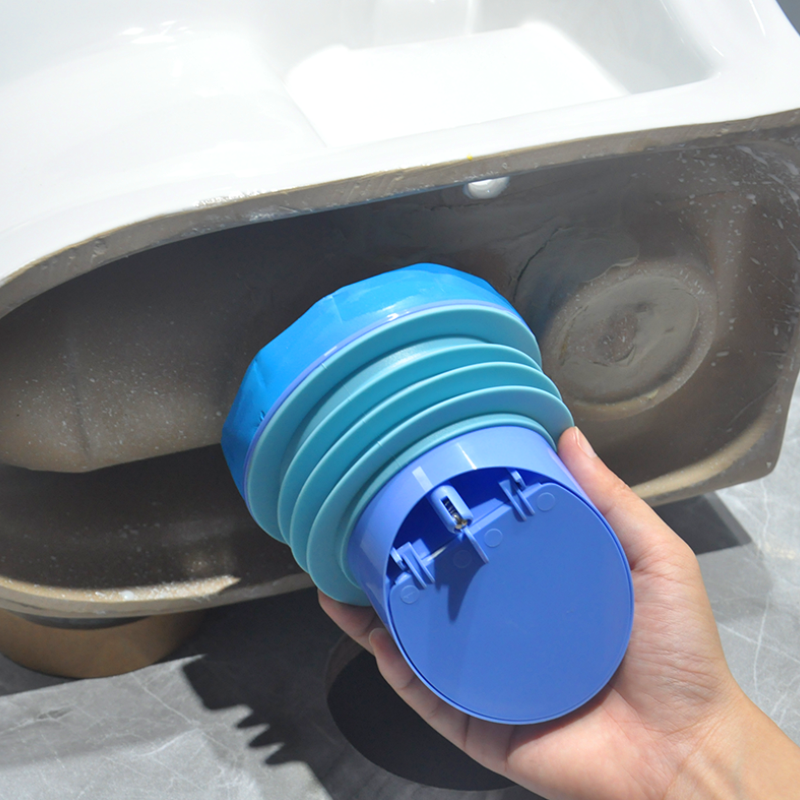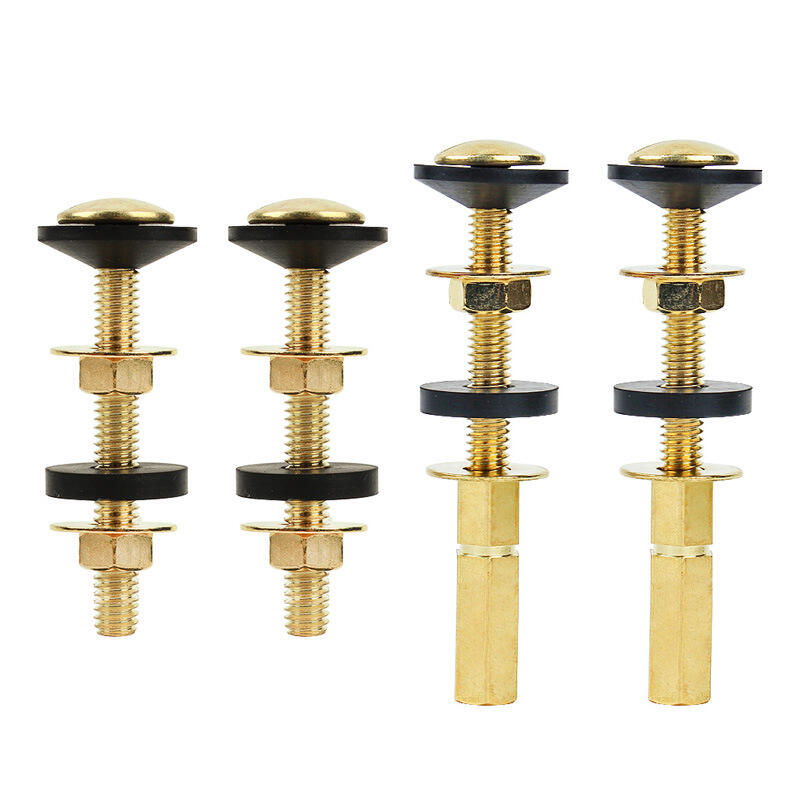Signs You Need a Toilet Flange Repair Kit
Identifying Common Toilet Flange Issues Like Leaks and Rocking Toilets
Toilets that rock back and forth or have water collecting around their base are pretty obvious signs something's wrong with the flange. Most often, these problems come from cracked plastic flanges which account for about half of all failure cases according to Plumbing Manufacturers International in 2022, or sometimes from metal flanges that have started to corrode over time. The flange basically holds those toilet bolts in place. When it fails to do so properly, the whole toilet shifts around, breaks the wax ring seal underneath, and eventually starts leaking water everywhere. If homeowners ignore these warning signs, serious structural damage can happen down below. Studies show that roughly two thirds of subfloor rot problems actually start with small flange leaks that nobody notices until it's too late, as reported by the Home Improvement Safety Council last year.
How a Damaged Flange Affects Bathroom Hygiene and Flooring
When a flange becomes damaged, it lets wastewater and those nasty sewer gases seep through, which can boost bacterial growth around the floor area by as much as three times according to NSF International's findings from 2023. The moisture that gets trapped actually breaks down the adhesives holding tiles or vinyl floors in place, so we often see these surfaces start lifting just six to twelve months after any leak first occurs. People tend to notice persistent bad smells along with all sorts of microbes growing in these areas too. This problem happens most frequently in bathrooms because the flange is typically installed beneath the final floor layer. Such installations account for about forty-one percent of all sanitation issues reported in apartment complexes, per data from the National Housing Survey released last year.
When Minor Repairs Aren’t Enough: Knowing It’s Time for a Repair Kit
Temporary fixes like caulking or stacking wax rings fail in 89% of cases within 90 days (Plumbing Standards Institute 2023). Lasting repairs require kits with flange extenders, stainless steel repair rings, or spanner plates. Consider upgrading if you notice:
- Multiple sheared bolt slots
- Cracks spanning over 25% of the flange circumference
- Rust affecting more than half the metal surface
These conditions call for structural reinforcement that simple seal replacements cannot provide.
Types of Toilet Flanges in Repair Kits and Their Applications
Understanding Flexible and Offset Flanges in Modern Kits
Flexible flanges feature rubberized gaskets that accommodate up to ¾” of pipe misalignment, making them ideal for installations over tile or laminate. Offset flanges correct drainpipe misplacement of 2–4”, using angled designs to maintain seals without rerouting pipes. Both types cut installation time by 40% compared to full flange replacements.
Universal Fit vs. System Specific Flanges: Performance and Compatibility Trade-Offs
Most universal flanges work with both 3 inch and 4 inch drain pipes because they have adjustable clamps. However, these often require some additional sealing material to prevent water from leaking out over time. On the other hand, system specific models such as ones made exclusively for cast iron drains provide much tighter fits and better stability during installation. The downside? They won't work with different types of piping materials. According to various pressure testing results, specialized flanges tend to hold back leaks around 22 percent more effectively compared to their universal counterparts when used with compatible pipe systems. This makes them particularly useful in situations where watertight connections are absolutely critical.
Material Selection: Plastic vs. Metal in Toilet Flange Repair Kits
Pros and Cons of Plastic vs. Metal Flange Components
Plastic flange kits made from materials like PVC or ABS are light on the wallet and resistant to rust, making them great choices for weekend warriors tackling home projects. These plastic versions won't react badly with different types of piping, though they can't handle as much weight as their metal counterparts, usually around 400 pounds max. When it comes to metal flanges, stainless steel and brass offer much better strength for supporting heavier installations, but come at a price tag that's roughly double or triple what plastic costs. According to research published last year, plastic flanges tend to break down about 37 percent quicker in busy households where they get used constantly. On the flip side, metal parts need some kind of anti-seize lubricant applied whenever attached to copper or cast iron pipes to stop those pesky chemical reactions that cause corrosion over time.
How Material Choice Impacts Long Term Performance
Going with plastic options can cut initial expenses anywhere between 40 to 60 percent, though folks often find themselves replacing them after about five to seven years in busy bathroom areas. Metal flanges tend to stick around much longer, sometimes over fifteen years, but they need a quick checkup once a year where those bolts get tightened properly to keep everything sealed tight. When we talk about damp spaces like bathrooms, PVC actually performs pretty well compared to rough metal surfaces. Studies indicate something like a 70% reduction in failures for PVC because it doesn't absorb moisture or harbor bacteria growth on its smooth exterior.
Key Components and Tools in a High Quality Toilet Flange Repair Kit
Standard Components: Bolts, Spacers, Wax Rings, and Seals
Good quality toilet repair kits typically come with stainless steel bolts that hold everything firmly in place, some polyethylene spacers which let plumbers adjust the height as needed, plus a thick wax ring that creates a proper seal against water leakage. The better priced options often include several rubber gaskets and neoprene seals too, so they can accommodate different sized pipes during installation. All these components work together to keep the toilet stable on the floor while preventing those frustrating leaks that might eventually ruin the wood underneath. According to Home Repair Journal from last year, this combination has proven effective at stopping water damage issues before they start causing bigger problems down the line.
Specialized Tools Included in Premium Kits
Advanced kits often include adjustable flange repair rings and reinforced PVC shims for uneven floors. Integrated bolt alignment templates reduce installation errors by 62% compared to basic kits (Plumbing Manufacturers International 2023). Many also feature compact basin wrenches, simplifying access to tight spaces under the tank during water line adjustments.
Evaluating Value: Are Extra Gaskets and Washers Worth It?
Basic installation kits get the job done for most situations, but throwing in those extra EPDM rubber washers along with backup sealing rings really makes a difference over time. People who've worked with these systems know that having at least three spare wax free seals in the box saves headaches later on when the originals start showing their age. And don't overlook models featuring brass reinforcement plates for PVC flanges either. According to some recent tests, these setups handle about 38 percent more weight before giving way, though results can vary depending on installation quality and environmental factors.




